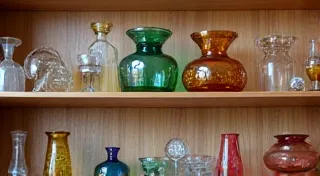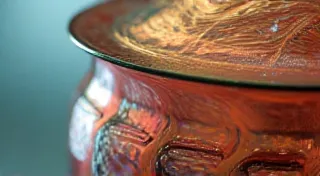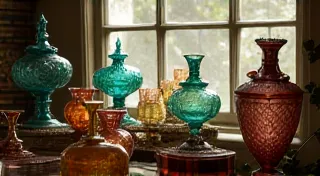The History of Fenton Carnival Glass: A Legacy of Beauty
Carnival glass, with its iridescent sheen and vibrant colors, holds a special place in the hearts of glass collectors worldwide. While several American glass manufacturers produced this dazzling ware during its heyday (roughly 1907-1923), the name “Fenton” stands out as a particularly important and prolific producer. This article explores the history of Fenton Art Glass Company and its contribution to the carnival glass legacy.
The Rise of Fenton: A Family Affair
The Fenton Art Glass Company was founded in 1900 in Martins Ferry, Ohio, by brothers Frank L. Fenton and Amos I. Fenton. Initially, the company focused on producing pressed glass tableware and artware. It wasn't until 1907 that Fenton began experimenting with what would become known as carnival glass. The precise circumstances surrounding the introduction of carnival glass production remain somewhat shrouded in mystery, with stories of a visit to a European glass factory playing a role. The fascination with this unique glassware quickly took hold, leading to significant investment and experimentation.
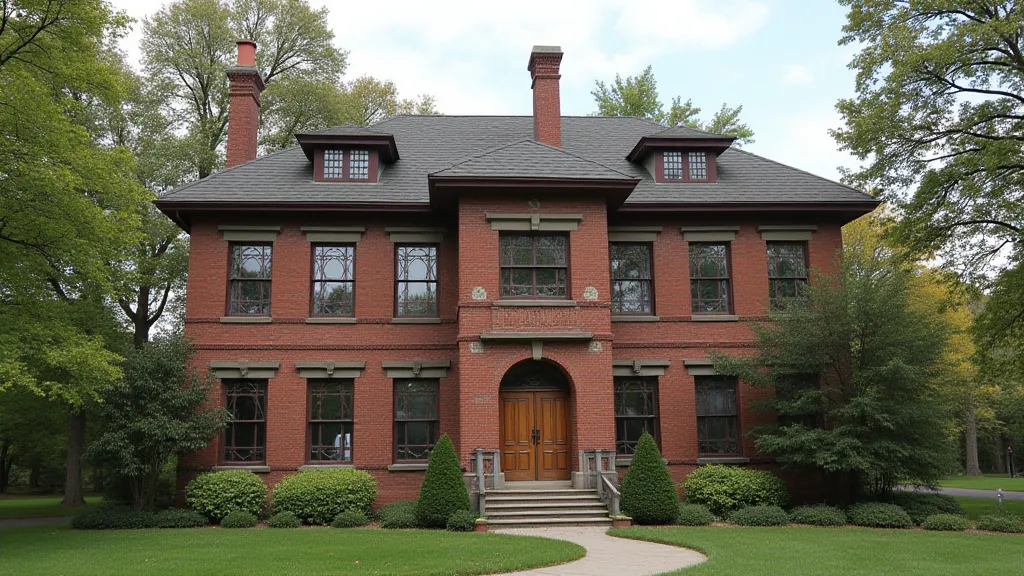
Early Years and the "Slag" Era (1907-1919)
The earliest Fenton carnival glass, often referred to as the "slag" era, is characterized by its relatively simple forms and distinctive iridescent finishes. The term "slag" originates from the use of iron oxide in the glass batch, which created a mottled, brownish-gold iridescence. This addition, while creating the signature look, was initially a byproduct of other manufacturing processes – a testament to the innovative spirit of the era. Popular patterns from this early period include “Finger Tip” and “Blossoms.” Production was relatively limited in these first few years, making these early pieces particularly sought after by collectors today. Understanding the subtle variations in color and intensity within the "slag" era pieces is a key aspect of serious carnival glass collecting. For those newer to the hobby, exploring caring for carnival glass, especially these early, more fragile pieces, is essential for preserving their beauty. The challenges of preserving these early pieces are significant, as the iridescence can be delicate and prone to damage from improper cleaning or handling. The complexity of identifying genuine antique carnival glass compared to later reproductions can also be a hurdle for new collectors.

The Golden Age of Fenton Carnival Glass (1911-1919)
Following 1911, Fenton significantly increased its carnival glass production, ushering in a "golden age" characterized by more complex forms, bolder colors, and a wider variety of patterns. This era witnessed the introduction of many iconic Fenton carnival glass patterns, including “Iridescence,” “Grape and Wine,” “Waterfall,” and “Queen’s Gold.” The shift was driven by increased demand and a growing understanding of how to control the iridescent finish, allowing for a broader spectrum of colors. The use of vibrant colors like ruby red, cobalt blue, and emerald green became increasingly common. Beyond the primary hues, subtle variations and combinations emerged, reflecting the artistry of the glassmakers. Collectors often become quite knowledgeable about these nuances, and decoding carnival glass colors can be a lifelong pursuit. Understanding the science behind these colors, and how they were achieved, adds another layer of appreciation for this beautiful art form. The specific chemical compounds used to create these iridescences were closely guarded secrets within the Fenton factory, contributing to the mystique surrounding the process. Experimentation with different metal oxides and firing techniques led to the breathtaking array of colors seen in Fenton's golden age. The quest for perfect iridescence was a driving force, and even slight variations in batch composition could result in unique and highly prized colorations.

The Decline and Later Production (1919-1932)
The end of World War I brought about a decline in the demand for carnival glass, prompting many manufacturers to cease production. Fenton continued to produce carnival glass, but at a significantly reduced rate. This later period (1919-1932) saw a shift towards simpler forms and less elaborate finishes. Fewer colours and styles were produced. The decline wasn't solely due to changing consumer tastes; economic factors and competition from other types of glassware also played a significant role. During this period, recognizing authentic Fenton carnival glass can be challenging, as some pieces were produced with less stringent quality control. A key element in identifying these pieces is understanding the carnival glass markings – examining the presence or absence of factory marks and the style of those marks can offer valuable clues. The absence of consistent marking practices during this later era adds another layer of complexity to identification and authentication. Collectors often rely on subtle nuances in glass characteristics and manufacturing techniques to differentiate between early and later Fenton pieces.
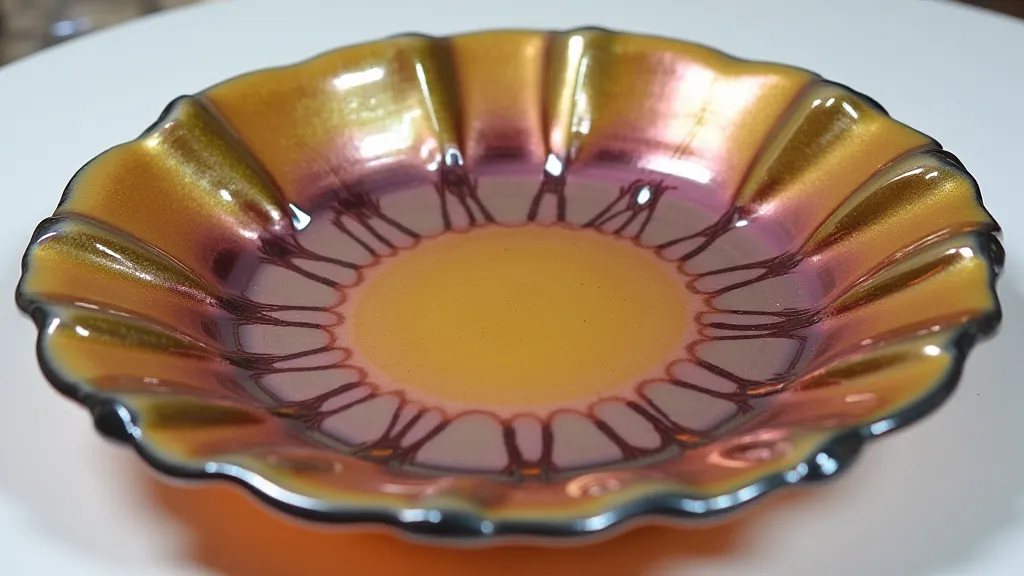
Beyond the Expected: Rarities and Variations
While the common colors and patterns of Fenton carnival glass are widely appreciated, the truly prized pieces are the rarer variations. These might include unusual color combinations, subtle pattern deviations, or pieces with exceptional iridescence. The pursuit of these uncommon finds fuels the passion of many collectors. The factors that contribute to rarity are complex – they can include production errors, experimental batches, or simply limited demand at the time of manufacture. These deviations from the standard production runs provide a fascinating glimpse into the creative process at Fenton and often command premium prices in the collector's market. The stories behind these rarities are often as captivating as the pieces themselves, with tales of accidental discoveries and experimental runs that resulted in unique and highly sought-after treasures. Exploring these less familiar pieces often uncovers surprising beauty and adds a new dimension to the world of carnival glass, beyond peacock tones and common patterns. The meticulous study of auction records and historical factory documents provides valuable insights into the production and value of these exceptional pieces.
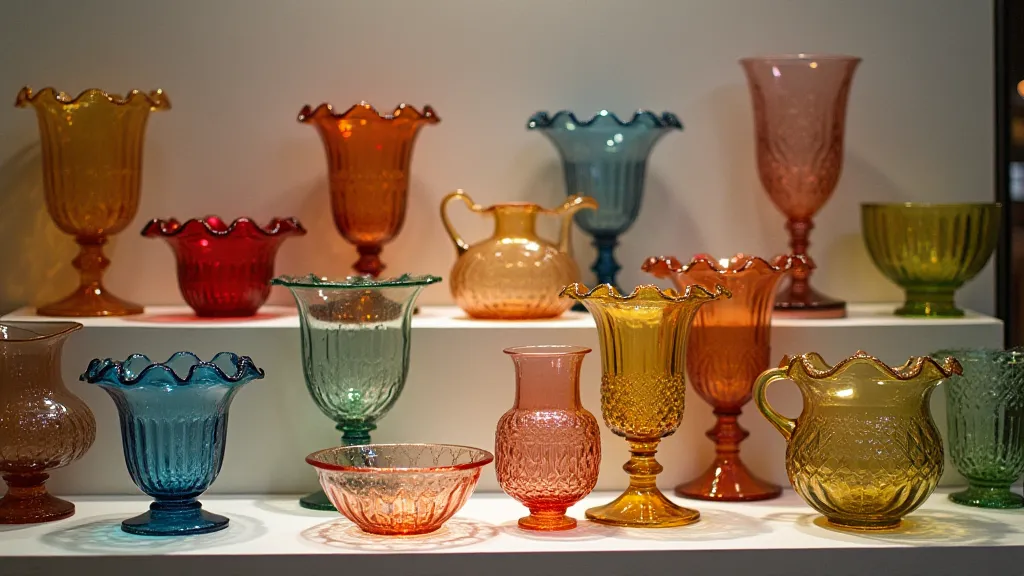
Fenton's Enduring Legacy
Although carnival glass production ended at Fenton in 1932, the company’s legacy continues to resonate with collectors. Fenton’s consistent quality, beautiful designs, and wide range of patterns have made it one of the most recognizable and cherished names in carnival glass. The allure of these sparkling pieces endures, providing endless enjoyment for those who appreciate their unique beauty and historical significance. The story of Fenton carnival glass is a testament to the ingenuity and artistry of American glassmaking during a vibrant and transformative era. The pieces are more than just beautiful objects; they represent a piece of history, a connection to a bygone age of craftsmanship and innovation. Preserving this legacy for future generations is a responsibility shared by collectors, museums, and anyone who appreciates the beauty of Fenton carnival glass. The enduring popularity of Fenton carnival glass is a testament to its timeless appeal and the dedication of collectors who continue to celebrate its beauty and historical significance. The ongoing research and documentation of Fenton carnival glass patterns and variations continue to deepen our understanding of this remarkable art form. The future of carnival glass collecting promises continued discovery and appreciation for these extraordinary pieces of American craftsmanship.


